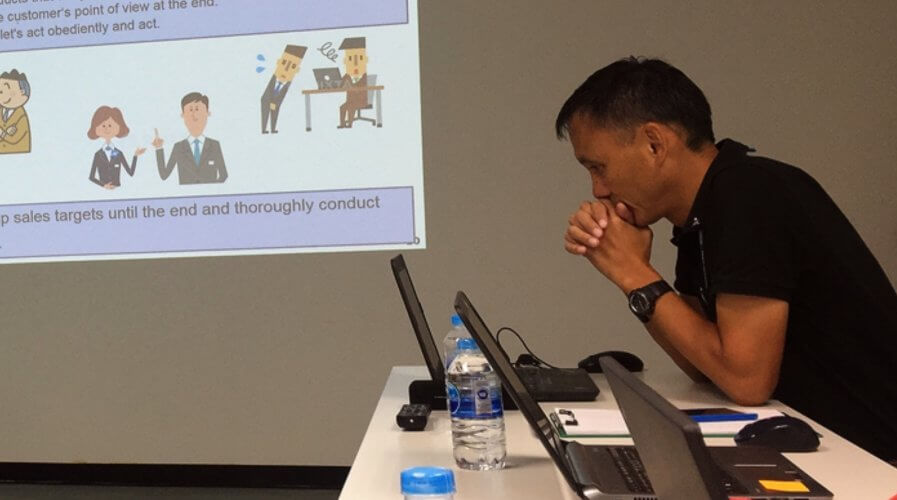
Here’s why the digitization of banks is critical to customers. Source: Shutterstock
Digitization of banks must make life easy for clients — Citi
DESPITE a slow start, banks are now aggressively pursuing digital transformation projects across departments and functions.
Plenty of progress has been made, with banks flaunting apps, talking about artificial intelligence, and even integrating into wearable devices.
For institutional clients, it was not uncommon to undergo a time-consuming and documentation-heavy process when it came to opening new or additional accounts.
Citi’s Treasury and Trade Solutions (TTS) division identified this pain point and turned it into a project it calls Digital Onboarding — which not only delighted clients — but put Citi on the shortlist for IDC’s Digital Transformation Awards.
“Through Citi TTS’ Digital Onboarding capability, we have radically transformed client onboarding, an area that is typically associated with being document-heavy and time-consuming,” Citi TTS Head (AU and NZ) Scott Southall told Tech Wire Asia.
“Citi’s Digital Onboarding capability was launched to deliver a truly transformative solution to clients. We were delighted to be able to introduce this pioneering solution that has now been recognized by IDC.
“The new capability has enabled us to engage clients digitally, giving them the ability to complete Know Your Customer (KYC) requirements and account opening in a manner that suits their need for speed, efficiency, and flexibility.
Using Digital Onboarding, existing clients can complete KYC & open new accounts in as little as two days. According to Citi, it prides itself on being the first bank to enable this capability across multiple markets in the Asia Pacific, including in Australia and New Zealand.
Southall explained that the primary challenge with Digital Onboarding was having to re-think and re-design the onboarding process so that it was not just digital, but also client-centric.
To overcome that challenge, the team started out by mapping the client’s onboarding journey front to back and identified three key areas of improvement:
# 1 | Process
Citi’s goal, Southall explained, was to build a user experience that was simple and convenient, from start to finish, so that it would make a real impact on our clients.
“We began by looking closely at a number of areas: document rationalization, better use of data, and the digitization of all relevant sub-processes.”
2) Policy
In order to really move to a digital onboarding model, Citi realized that its internal culture and mindset had to change — from being risk-averse to taking a risk-based approach.
“We revamped our controls framework and updated our policies to align with the digital model in an effort to empower risk-based decision making.”
3) Platform
Finally, Citi upgraded its platforms and created a fully connected ecosystem with real-time API calls that enabled digital fulfillment from start to finish.
“As a result, we reduced over 70 percent of service agreement and forms while leveraging existing data assets to complete KYC and account opening requirements. By digitizing sub-processes, clients did not need to interact with as many touchpoints.”
The resulting digital onboarding portal seemed quite intelligent. It pre-populates client data using data from the client’s parent entity and existing data, allowing the client to fill only the additional information required.
It further uses digital signatures and digital document exchange to allow clients to easily submit their relevant documents and instructions to complete an onboarding request (eliminating physical submission to the branch).
Given all the conversation about legacy systems that banks struggle with, digital onboarding capabilities are a great achievement for Citi — and clients are sure to be delighted. After all, most businesses people prefer not to be bogged down by cumbersome processes, especially in this digital-first era.
“We will continue to progressively launch the solution to all our markets in the region as we continue to elevate the client experience using technology as a key enabler,” said Southall.
“Digital transformation is, therefore, key to our business and to our clients. We focus our digitization and innovation efforts by making strategic investments into building out our proprietary digital capabilities,” concluded Southall.
This year, aside from digital onboarding, Citi TTS has launched other digital capabilities such as mobile banking and biometric authentication — all of which, it hopes, will delight institutional clients at every interaction.
READ MORE
- Ethical AI: The renewed importance of safeguarding data and customer privacy in Generative AI applications
- How Japan balances AI-driven opportunities with cybersecurity needs
- Deploying SASE: Benchmarking your approach
- Insurance everywhere all at once: the digital transformation of the APAC insurance industry
- Google parent Alphabet eyes HubSpot: A potential acquisition shaping the future of CRM


